Review – Death Stranding 2: Beyond the Shoreline
Sure, here’s a rewritten version of the content:
—

From the Mind of Hideo Kojima
Hideo Kojima stands as one of the most visionary figures in the video game industry. From Metal Gear Solid to Policenauts, P.T., and the canceled Silent Hills, any project bearing his name assures a unique experience. Yet, his work is not for everyone. For each fan, there’s another person who doesn’t quite connect with his creations. This division was especially evident with Death Stranding, the acclaimed 2019 title that felt ahead of its time in many respects. Sam Porter Bridges’ journey across a fractured United States offered an immersive experience loved by many, though some found the harsh virtual world and unconventional controls off-putting. Thankfully, the overall reception was positive, encouraging many when a sequel was announced—one aimed at uniting us during a period of marked social division.
Announced more than a year ago, Death Stranding 2: On the Beach emerges not only as a major PlayStation 5 exclusive for 2025 but also arrives at a time when its message of unity is profoundly needed. However, skepticism surrounds this project. The original Death Stranding was a masterpiece that made a significant impact with its innovative ideas in 2019. Creating a sequel means it must evolve these systems, expand the story, and attempt to achieve an impact similar to its predecessor, a daunting task many see as impossible.
Thus, Death Stranding 2: On the Beach arrives on our PlayStation 5 consoles. Once again, Hideo Kojima pushes the boundaries of this entertainment medium, intent on experimenting with previously unexplored ideas while expanding this intellectual property into uncharted territory. We all hope that characters like Sam, Fragile, Higgs, and the rest will solidify their status as iconic figures in the industry. Does Death Stranding 2: On the Beach live up to its masterful expectations? How much does the sequel improve upon the 2019 title? Find answers to these and other questions in our Atomix Review.
Endure and Survive
Discussing the story of Death Stranding 2: On the Beach extends beyond the events unfolding before us. Kojima has crafted an expansive world. Concepts like the beach, BT, Extinction Entity, DOOMS, and other elaborate terms may sound confusing at first, but this title, like its predecessor, can be enjoyed in multiple ways. Fans of large-scale conflicts where the world hangs in the balance can engage in the mission to stop Higgs, while those seeking more personal narratives can delve into Sam’s confrontation with trauma. There’s even a direct relation between this installment’s events and current global situations. This and more make Death Stranding 2: On the Beach one of the most engaging experiences this year.

Death Stranding 2: On the Beach unfolds several months after the events of the first game. Sam and Lou now reside in the southernmost part of the United States, enjoying a cherished father-daughter relationship. However, a surprise visit from Fragile compels our protagonist to once again don his delivery backpack, this time to reconnect parts of Mexico and eventually Australia. The journey is long, fraught with challenges for the main cast. To complicate matters, the unexpected return of Higgs and the rise of a terrorist group make the primary mission more arduous than anticipated.
Like its predecessor, Death Stranding 2: On the Beach is a complex narrative aiming to convey much more. The quest to connect Mexico and Australia transcends merely reconstructing a fractured society; it serves as a springboard to explore themes like artificial intelligence and the dangers of militarization. Furthermore, this title doesn’t forget its science fiction roots, which grant its world a unique identity, especially through its new characters. For instance, Rainy is a girl unable to give birth to her seven-month-old baby but possesses the ability to cause healing rain within a small range, contrasting the toxic water usually encountered. This is a concept only Kojima could envision, one of many intriguing elements found here.

Kojima Productions adeptly balances style and substance. One moment, we’re battling a character resembling Snake amidst a burning Mexico; the next, we’re immersed in a conversation exploring Sam’s trauma. This game offers something for everyone. Those captivated by the vast world created by the director can dive deeper into the beach’s concepts, Higgs’ conflict, and how the first game’s events tie into the sequel. If this doesn’t appeal to you, focus on Sam’s relationships with secondary characters or his mental health crisis after facing one of the most traumatic events in his life. There is even room to draw connections between the title and current global events.
To some, the large-scale conflict detracts from the personal narrative, diminishing its impact. While Sam is the protagonist, in many ways he is sidelined to focus on the new and existing ensemble. The sequel follows a similar path, and though character-driven moments shine brightly, they occur less frequently than many would prefer. Additionally, much of the dialogue is dedicated to explaining every possible aspect of the world, removing much of the universe’s mystery. Answers to questions you may never have contemplated are presented as pivotal moments, and considering this is about a 70-hour experience, it’s easy to lose track of details that hold significant importance. Though a compendium is always available to clear up some doubts, the game places too much emphasis on exposition.

This isn’t to say Death Stranding 2: On the Beach doesn’t represent an evolution over its predecessor. One of the most significant improvements is in pacing. Although it’s an open-world game where you can ignore the main campaign for 10 hours to complete side missions, its structure keeps players engaged when pursuing story tasks. Each objective goes beyond mere delivery, consistently presenting engaging goals that explore different aspects of this world and its characters, far from mere tutorials for the mechanics this installment offers.
Moreover, the optional tasks introduce a secondary cast who, with minimal dialogue, manage to convey unique identities. Best of all, some offer special objectives exploring various aspects of this world, creating memorable moments like a mission to rescue a pizza delivery person from Higgs’ henchmen—an entertaining sequence nobody can afford to miss. There are many such cases, bringing virtual worlds to life in a way that will entice more than one person to explore every nook and cranny of Mexico and Australia to discover everything the title holds.

All this, and more, is built around the main characters. Sam and Fragile are the stars of this narrative. Each carries their own demons, and the intercontinental journey serves not only as a means to mend the world’s situation but also helps them overcome personal traumas. At the same time, the game provides space for you, the player, to create your own story. Whether traversing difficult terrain, scaling impossible mountains, or infiltrating enemy encampments unnoticed, these become memories you’ll cherish for a long time.
As with any Kojima game, Death Stranding 2: On the Beach carries a political message. While not expressed similarly to the Metal Gear Solid series, it uses its virtual world to highlight its creator’s inspiration. Developed during the pandemic, the designer uses this space to explore how society must come together after years of isolation. Elements such as Artificial Intelligence replacing human work and Australia’s climate echo climate change. Additionally, Higgs’ militarization mirrors today’s global issues, even if this wasn’t anticipated during development.

Death Stranding 2: On the Beach offers a plethora of experiences. Kojima Productions’ work catches the interest of various players. While I would’ve liked more focus on the internal struggles of Sam and Fragile, I cannot deny that the sequel’s world expansion is entertaining. Both returning and new characters are endearing, and exploring Mexico and Australia and meeting the vibrant secondary cast is its own reward. The sequel addresses some first game’s issues while retaining its controversial elements, showcasing Kojima’s quirks that many appreciate as part of a unique identity—a voice striving to stand out in an industry seemingly providing less space for creative minds.
An Unmatched World
Death Stranding 2: On the Beach stands as one of the most visually impressive games on PlayStation 5. Kojima Productions once again demonstrates their mastery in leveraging the Decima Engine’s capabilities. The result is a spectacular visual experience that borders on realism without neglecting science fiction elements, providing a unique identity. Besides, motion capture technology impressive digitally recreates actors, bypassing the uncanny valley to deliver faithful representations of Norman Reedus, Léa Seydoux, and the rest of the cast.

From the outset, the sequel makes it clear this is a current-generation experience. The introduction resembles a National Geographic documentary, and the first glimpse of Mexico’s mountainous terrain leaves an indelible mark on anyone giving this entry a chance. Upon reaching Australia, the map showcases diverse terrains, each as astonishing as the next. Deserts give way to verdant valleys, transforming into arid plains where orange tones convey the extreme heat confronting Sam. On the other side, a snowy mountain dazzles with white that nearly blinds anyone exiting an installation.
Australia and Mexico are breathtaking. Without humanity’s imprint, small settlements stand out more prominently. For this, the title boasts an impressive draw distance, allowing you to see towering structures of cities you’ll never enter from kilometers. This sensation extends into the night, with only the moon and Sam’s flashlight offering companionship. Whether near an enemy encampment or close to a BT zone, the title never ceases to amaze despite the dangers lurking nearby. Additionally, the sequel introduces environmental calamities, like sandstorms and blizzards, blocking Sam’s and the player’s vision, encapsulating them within a precarious monochrome environment.

Alongside, Kojima Productions employs motion capture technology to lend lifelike performance to actors like Norman Reedus, Troy Baker, Elle Fanning, George Miller, and Luca Marinelli portraying Sam, Higgs, Tomorrow, Tarman, and Neil Vana, respectively. Each appears nearly identical to their real-life counterpart, avoiding the uncanny valley. Facial expressions steal the spotlight here. Though action scene animations are exciting, small eye movements or lip motions sell the illusion of witnessing real people embodying Hideo Kojima’s eccentric story.
Adding to this, Yoji Shinkawa’s artistic direction eloquently stands out in new character designs. A favorite detail is Higgs’ mask, altering its expression with every scene shift. New concepts excel too, like the Watchers—BTs capable of tracking players with their colossal red eyes that monitor you across fields where skies turn ominously red symbolizing imminent danger. Dollman, a movable puppet animated akin to stop-motion, also stands out. Impossible not mentioning Tomorrow, transitioning from youthful beauty to terrifying power upon submerging into ever-present tar. Neil Vana, an evident homage to Solid Snake, remains one of Kojima’s myriad references to his past works.

Kojima Productions presents a stunning world this time. Nothing today looks as good as Death Stranding 2: On the Beach. While the game provides enhancements for the PlayStation 5 Pro, base console users still enjoy a top-tier experience with two visual modes, devoid of bugs or glitches, and exceptional performance. The studio shows considerable mastery over the Decima Engine, crafting environments that feel real while brimming with creativity. The same applies to characters, each equipped with at least one distinctive trait setting them apart. Without doubt, this stands as one of this generation’s finest visual works.
The Post-Apocalyptic Soundtrack
A significant factor contributing to Death Stranding 2: On the Beach’s special nature and identity as a Hideo Kojima title is its soundscape. Besides featuring top-notch performances by the principal cast, the game boasts a soundtrack curated by its director. Remarkably, this isn’t just a backdrop for your adventure; each song is perfectly used to convey specific emotions across the countries you traverse.

Every actor excels in their role. Norman Reedus, despite having the fewest lines and primarily serving as a receptacle for the complex concepts, stands out through grunts and other expressions accurately portraying situational narratives. Sam functions not just as a user avatar interacting with the world but as an intermediary with the story, asking and responding as any one of us would in the same circumstance.
Léa Seydoux, meanwhile, possesses a soothing voice akin to a comforting melody but unleashes intense emotions whenever necessary. Within the entire cast, the French actor bears the heaviest emotional load, consistently conveying the appropriate sentiments. Alongside, we have Dollman. Though embodying Fatih Akın’s image, Jonathan Roumie voices him, delivering one of the best additions to this sequel. Accompanying us largely throughout the adventure, the puppet becomes our best friend, providing the support Sam desperately needs.

The rest of the cast also shines. Jesse Corti brings Deadman, Guillermo del Toro’s look-alike, to life. Elle Fanning makes a remarkable addition as Tomorrow, generating anticipation for future appearances. Shioli Kutsuna, in both Japanese and English, captures the optimism Rainy radiates throughout the adventure. Without overlooking Troy Baker, returning as Higgs, evidently relishing his role, showcasing why he is among today’s most acclaimed industry actors.
However, actors’ voices are heard mostly when progressing the story. Most of the time, Death Stranding 2: On the Beach offers an introspective experience, where vehicle engines, rainfall’s oppression, and Sam’s footsteps serve as the main backdrop. The sound design is phenomenal, transporting us to a unique world, simultaneously real yet distinctly unique. It amplifies the impact of musical interludes immensely.

During key moments, typically tied to main missions, the camera pans away from Sam, highlighting the environments being traversed while a licensed song plays. Bands like Low Roar, Silent Poets, Caroline Polachek, Magnolian, Hania Rani, Daichi Miura, and Gen Hoshino, among many others, comprise this sequel’s soundtrack, each invoking the right mood. Traversing a desert amidst a sandstorm quiets everything around us while a tune motivates the player, indicating the right path and igniting many with newfound energy. For a fleeting moment, Death Stranding 2: On the Beach ceases to be about connecting Australia and thwarting a terrorist threat, transforming into an introspective experience where you become one with the controller—where only your movement, and Sam’s through this virtual world, matters.
Hideo Kojima employs music uniquely, using this expressive medium to enhance connections with the virtual world, placing ourselves in Sam’s shoes—a feeling hardly matched by other games. Moreover, each actor delivers outstanding performances, capturing scene sentiments and elevating every dialogue, regardless of the amount of exposition someone like Marty Rhone needs to provide in his role as Tarman.
The Modern Sisyphus
Beyond its narrative, Death Stranding‘s gameplay was polarizing. Despite promoting unity, it became the very opposite in 2019. Its hostile design and asynchronous multiplayer were retained for the sequel, yet new powerful tweaks improve key areas like combat and stealth without sacrificing the core experience: support.

Death Stranding 2: On the Beach is unparalleled. Stealth and action elements abound, requiring base infiltration and passage through monster-infested areas capable of promptly ending your endeavors—yet the journey across Mexico and Australia stands as the centerpiece. Unlike other open-world titles like Breath of the Wild or The Witcher III, Kojima Productions positioned Sam as a vehicle, upgradable with attachments and levels; seemingly simple tasks like climbing or river-crossing, routine elsewhere, pose significant early-game challenges here.
The sequel remains true to this formula. Our mission involves reconnecting Mexico and Australia by delivering packages between bases, achievable on foot or by vehicle, like trucks or motorcycles. Each delivery significantly varies, some involving water-sensitive medicine, others containing fragile chemicals, even people transport. Crucially, variety extends to material, durability, and quantity. Perfecting the balance—not just to keep our protagonist upright but also maximizing deliveries—lies at this gameplay’s core.

Each journey demands not just package delivery but also careful travel preparation. Death Stranding 2: On the Beach is harsh by design—terrain may trip you, cliffs force multiple ladder and rope possessions for ascents and descents, while BT and terrorist camps test stealth skills, potentially requiring arms or grenades if necessary. Even vehicles are hindered by terrain, jeopardizing cargo arrival in pristine condition.
Luckily, Sam has equipment to ease this pursuit, from exoskeletons granting better balance and higher carrying capacity to various tools reducing terrain hostility, like ladders functioning as river bridges. Additionally, the game features a 3D map displaying world topography, introducing the APAS system: an AI guiding route optimization and even offering passive abilities—each needing a specific resource—increasing vehicle durability or weapon accuracy as examples.

As mentioned, succeeding involves optimizing package transport, balancing multiple deliveries and lost cargo collections without overloading Sam, which slows him down, drains stamina, and destabilizes him. To prevent toppling, players need to manage load balance, holding L2 and R2 to walk steadily. Equipment and APAS upgrades aid here, ensuring the world’s burden doesn’t feel overwhelming. Completing deliveries automatically improves Sam’s stats based on mission-used elements, enhancing five specific areas that, upon leveling up, unlock further APAS functionality. Yet, this system feels arbitrary—combat experience doesn’t guarantee significant improvement unless lucky.
Adhering closely to the 2019 title’s formula, Death Stranding 2: On the Beach concentrates on equipping players against an inhospitable world. Nonetheless, the new entry refuses to simplify our path, introducing random environmental havoc. Earthquakes destabilize Sam, downpours alter or generate rivers, and wildfires create fiery prisons. These intriguing additions arrive unpredictably, potentially altering—or aborting—routes instantly. Precautionary measures abound, though effective navigation remains elusive amidst these occurrences. Furthermore, Australia hazards surface as chiraly-infused bats, insects, and reptiles attack our protagonist and harm cargo and equipment.
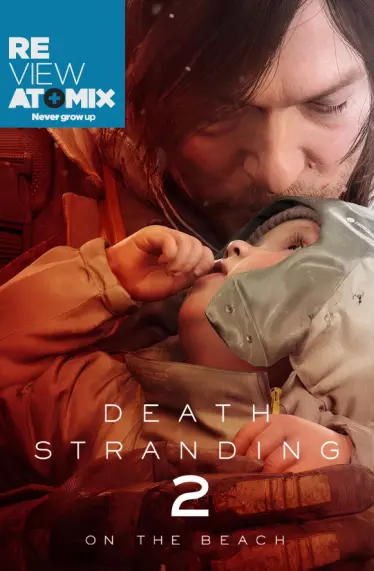


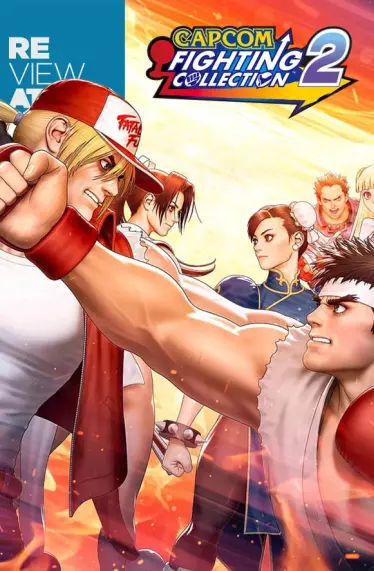

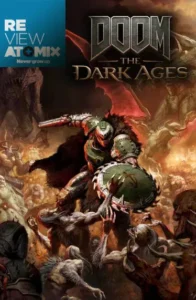


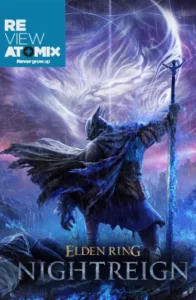

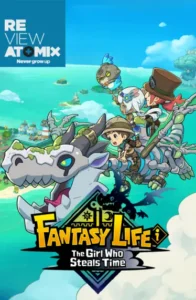
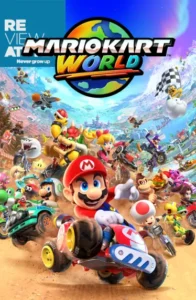

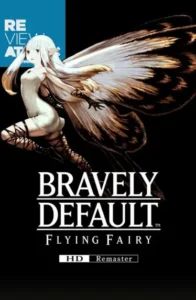
Post Comment